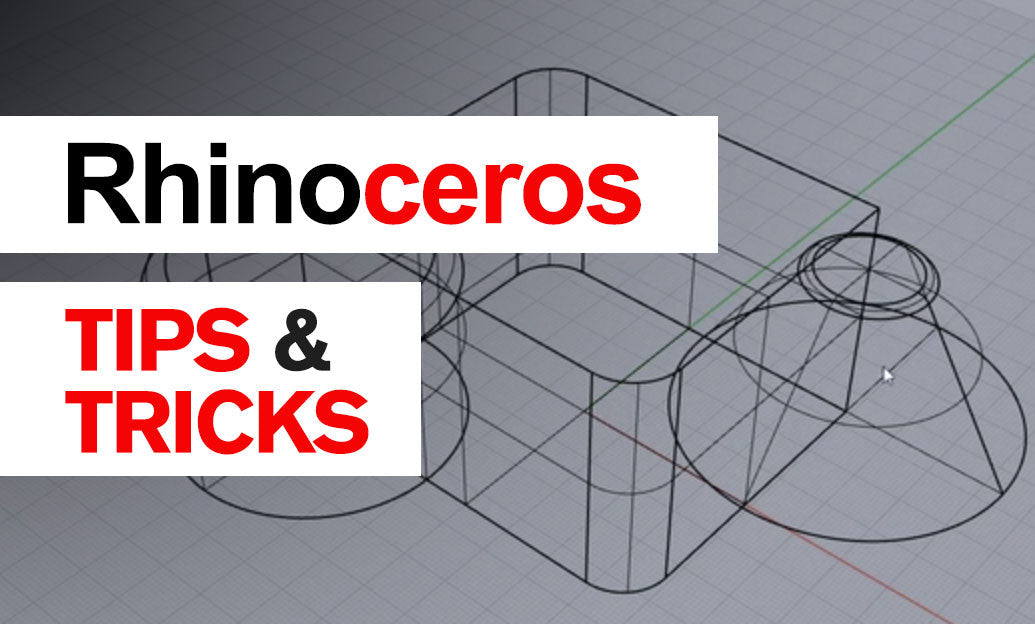Your Cart is Empty
Customer Testimonials
-
"Great customer service. The folks at Novedge were super helpful in navigating a somewhat complicated order including software upgrades and serial numbers in various stages of inactivity. They were friendly and helpful throughout the process.."
Ruben Ruckmark
"Quick & very helpful. We have been using Novedge for years and are very happy with their quick service when we need to make a purchase and excellent support resolving any issues."
Will Woodson
"Scott is the best. He reminds me about subscriptions dates, guides me in the correct direction for updates. He always responds promptly to me. He is literally the reason I continue to work with Novedge and will do so in the future."
Edward Mchugh
"Calvin Lok is “the man”. After my purchase of Sketchup 2021, he called me and provided step-by-step instructions to ease me through difficulties I was having with the setup of my new software."
Mike Borzage
Rhino 3D Tip: Enhance Your Rhino 3D Workflow with Effective Use of History for Parametric Design
October 14, 2024 2 min read

In Rhino 3D, creating parametric designs with History is a powerful feature that can significantly enhance your modeling workflow. The ability to maintain relationships between objects means that changes to the parent object automatically update the child objects. Here are some tips to effectively use History in your projects:
- Understanding History: History in Rhino works by recording operations between objects. This allows for a dynamic relationship where subsequent modifications to the input objects will reflect on the output objects.
-
Enabling History: By default, History is not automatically enabled for every command. You can enable it by typing
Historyin the command line and choosing Record. Alternatively, you can toggle it on from the status bar for specific commands. -
Use with Transformations: History is particularly useful for transformations like
Extrude,Sweep, andLoft. For example, when you extrude a curve, any changes to the curve will automatically update the extrusion if History is enabled. -
Maintaining Control: Not every operation supports History, and sometimes it could be more efficient to break the History to make independent edits. Use the
BreakHistorycommand when you need to sever these relationships. -
Visibility of History: To manage and view the relationships, use the
Historypanel. It provides a graphical representation of the parent-child object relationships, making it easier to navigate complex models. - Keep Performance in Mind: While History can be incredibly helpful, it may impact performance, especially with large assemblies. Use it judiciously to keep your model lightweight and responsive.
- Undo and Redo: The undo and redo commands in Rhino respect the History relationships. This means you can roll back changes without losing the parametric relationships established by History.
- Use in Iterative Design: History is excellent for iterative design processes. It allows you to quickly test variations and see immediate results, which is particularly useful in design exploration and prototyping.
Parametric design with History in Rhino 3D offers you the flexibility to explore complex geometries and refine your models efficiently. By mastering this feature, you can significantly streamline your workflow and focus on design innovation. For more in-depth tutorials and professional tips, check out our partner NOVEDGE, who offers a wide range of resources for Rhino users.
You can find all the Rhino products on the NOVEDGE web site at this page.
Also in Design News

Rhino 3D Tip: Understanding Surface and Solid Modeling in Rhino for Enhanced Workflow Efficiency
August 30, 2025 3 min read
Read More
Unlocking Advanced Animation Techniques: Five Studio-Proven Tricks to Elevate Your 3ds Max Workflow
August 30, 2025 6 min read
Read MoreSubscribe
Sign up to get the latest on sales, new releases and more …



